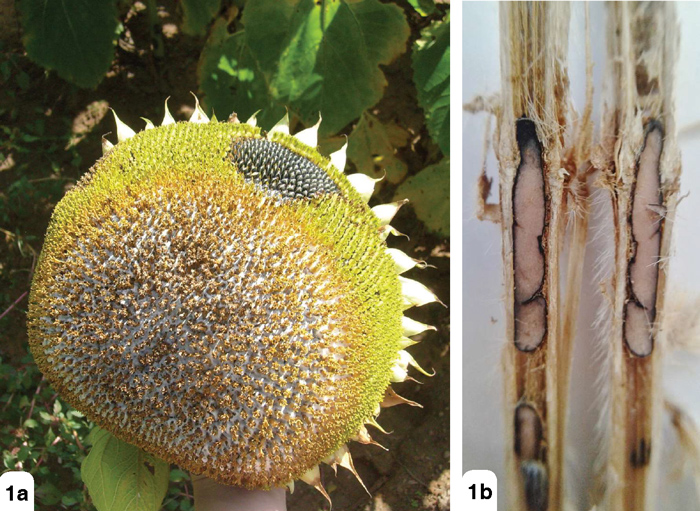July 2021
| ARTICLE COMPILED BY THE SOUTH AFRICAN SCLEROTINIA RESEARCH NETWORK |
Sclerotinia stem rot causes a lot of damage to crops, particularly soybean and sunflower, and can result in significant yield losses. The Sclerotinia sclerotiorum fungus cause the disease. In South Africa, the most important crops affected by this disease are sunflower, soybean and canola.
HOSTS
Sclerotinia diseases affect over 500 plant species. This includes oilseed crops (sunflower, soybean and canola), vegetable crops (cabbage, cauliflower, butternut, hubbard squash, peppers, tomatoes, peas) as well as legumes (dry beans). It is very important to know that weeds, such as Tall khakibos, common cosmos and common blackjack are also hosts to Sclerotinia.
SYMPTOMS
The visible symptoms are dependent on the host growth stage. Seedling wilting may occur, although Sclerotinia stem and head rot frequently develop at flowering and pod or seed filling stages. Brown water-soaked lesions are initial symptoms observed that become covered with white cotton-like mycelium (this is the fungal growth observed) on sunflower heads (Photo 1a) and soybean pods as well as in and on the stems of both sunflower. and soybean (Photo 1b).

Mycelium at the back of a sunflower head (a) and in a soybean stem (b).
The white mycelium on the face of sunflowers eventually develops into a net of black sclerotia, the survival structure and is from where the pathogen gets its name. As the disease matures, a shredded appearance, with sclerotia between plant fibres can be observed in sunflower specifically. This fungus can also infect the subterranean crown and form sclerotia within the lower stem of sunflower and soybean.
CAN I MANAGE THIS DISEASE?
Control of the Sclerotinia diseases is very difficult. The fungus forms hard survival structures (introduced earlier as sclerotia) which can survive in the soil for up to twelve years if environmental conditions are favourable.
Because there are so many different plants which get Sclerotinia, it is difficult to control the disease with crop rotation. One crop which does not get Sclerotinia is maize. Because the sclerotia can survive in the soil for so long, crop rotation sequences with non-hosts need to be done for much longer than just a year or two to try to decrease the disease incidence and persistence of the pathogen in the soil.
There are very few fungicides available in South Africa, and these need to be applied at the right time. South African soybean and sunflower cultivars are all susceptible to Sclerotinia, but the degree of disease is different on the cultivars.
At the end of the day, there is no single way of controlling Sclerotinia. From now on, you need to manage the pathogen presence to make sure the incidence stays low. Getting rid of the disease will take many years, if it’s even possible to completely eradicate all sources of the inoculum.
WHAT TO DO IF YOU FIND SCLEROTINIA IN YOUR FIELD
More articles are available on the webpage http://sclerotinia.co.za/. Producers can also reach out to Dr Lisa Rothmann (CoetzeeLA@ufs.ac.za) or Dr Miekie Human (012 943 8207) if they have more questions.
Publication: July 2021
Section: Pula/Imvula